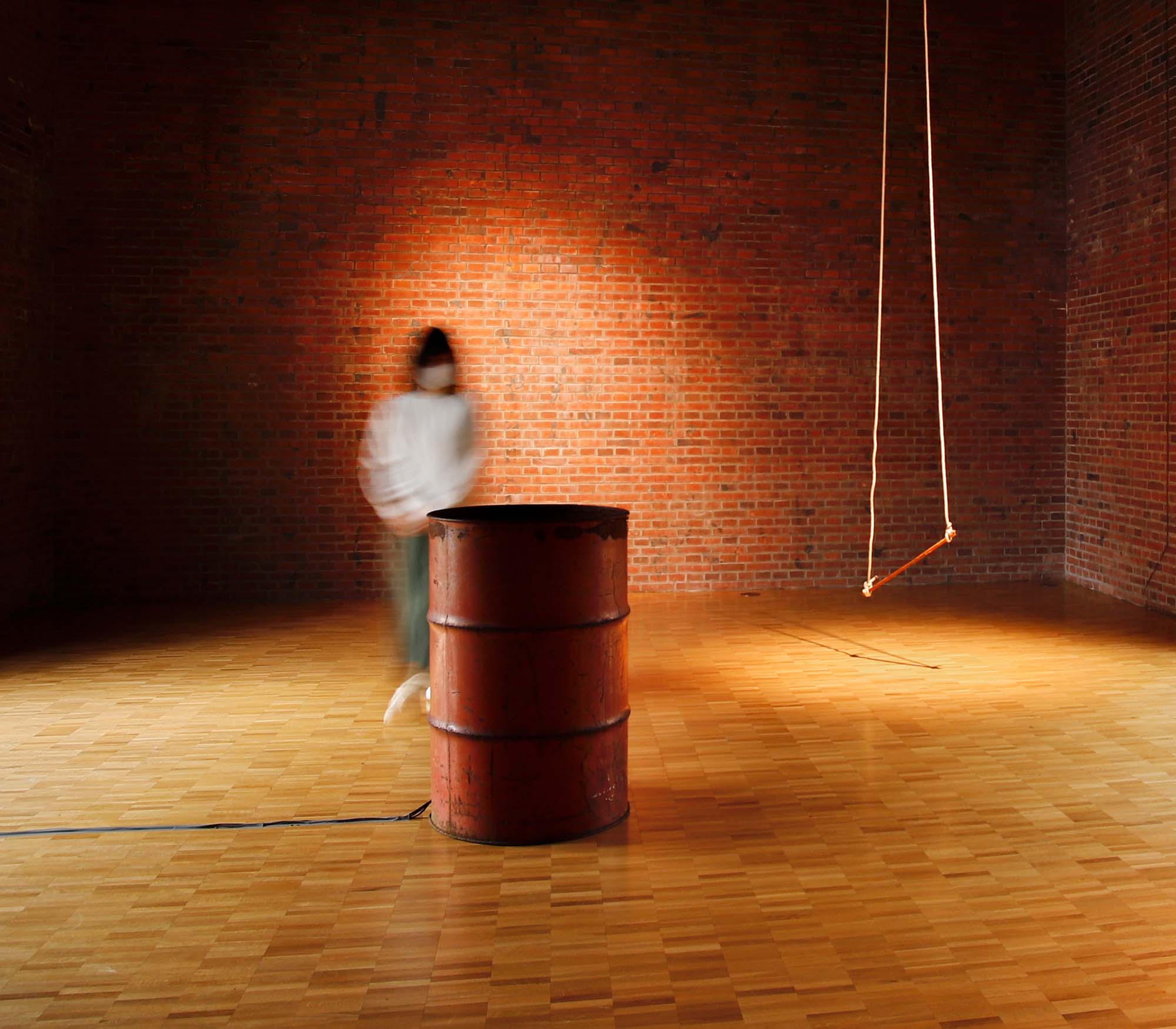2021
Installation + Performance


Two Windows
2021
Installation + Performance
in Solo Exhibition
2021.03.06 – 03.22
Artist talk
2021.03.06
Chiharu Koda and
Sayaka Hanafusa (Suzuki)
Moderator Hideyuki Yanagisawa
(Chief Curator, Ohara Museum of Art)
Venue of the exhibition and performance
PORT ART & DESIGN TSUYAMA
www.port-tsuyama.com
Funded by Okayama Prefecture
Art and Culture Development
The text hung in the exhibition. (in German / original is in Japanese)
Der Text, den in der Ausstellung ausgehängt wurde
(auf Deutsch / das Original ist auf Japanisch)



Performance on 2021/march/05
Making agr gelee on 2021/march/03






> In the bright room a drum, distance sensors, Raspberry Pi, a speaker, WiFi cable, japanese cypress essential oil, ceder branch, a block wood board cut into a circle, rusted metal rod, cotton rope(10m, ø10mm), four blocks, aluminum sheet > In the dark room a drum, speakers, sounds generated from past weather forecast data, WiFi cable, a black styrol board cut into a circle, light, humidifier, japanese cypress essential oil, oil heater > On the courtyard Agar gelatin on the wooden bathtub lid > On the backyard Grandparent‘s original bathtub for wood-firing that had used in my childhood, blocks, ceder branch
In order to visualize the memory of the bath, agar gelatin made from 190L water in the bathtub. The gelatin was cooked in the backyard and turned over in the courtyard. During the exhibition, the gelatin on the floor was stepped on by people and became smaller and was washed away by the rain. In some areas, mold developed on it. The gelatin that stuck to the bottom of the bathtub dried and cracked. From a barrel, you can hear two difference sounds. One was a continuous generated sounds condense the past weather forecast data of 3 years (1987 - 1990) into 8 hours. The sound was inspired by rain or waterdrops. Another sound was played in the dark room (B) only when someone approached a drum in the bright room (A). The sound became louder while somone approached the drum in the bright room (A), and the sound changed from water dropping into the crackling of flames. The water sound was generated by using the precipitation and average pressure data of past weather forecasts, and the fire sound was generated using the sunshine duration and maximum temperature data.
